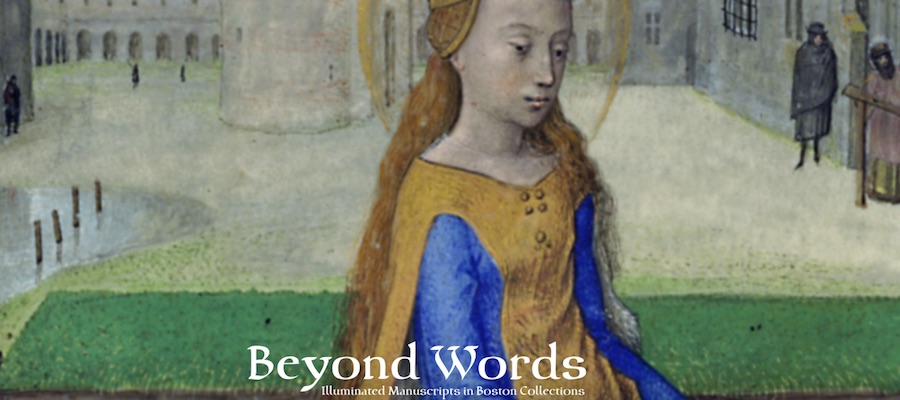Beyond Words: Illuminated Manuscripts in Boston Collections, Boston, MA, September 12, 2016–January 16, 2017
Beyond Words: Illuminated Manuscripts in Boston Collections is the first exhibition to showcase highlights of illuminated manuscripts in the Boston area. An ambitious collaborative project, Beyond Words is notable for the size of its curatorial team, the number of lending institutions, and a multi-venue display. The exhibition presents more than 260 outstanding manuscripts and printed books from nineteen Boston-area collections, dating from the ninth to the seventeenth centuries. The exhibit is supplemented by an extensive catalog, a three-day symposium, and public programming.
Manuscripts from Church & Cloister
Houghton Library, Harvard University, September 12–December 10, 2016
In the Houghton Library’s portion of the exhibit, the emphasis is on the centrality of books to monastic life. Male and female monasticism revolved around religion, but at its heart was a cult of the book: not just the bible, all books. Monastic scriptoria guaranteed the survival and transmission of classical literature and learning. Reverence felt for texts and their authors is manifest in the beauty of the books that were crafted in monasteries and convents. Manuscripts on display at the Houghton Library highlight the scriptorium as both a space for the production of manuscripts and the human collective that produced them.
Manuscripts for Pleasure & Piety
McMullen Museum, Boston College, September 12–December 11, 2016
At the McMullen Museum, the visitor’s attention shifts to lay readership and the place of books in medieval society. The High Middle Ages witnessed an affirmation of the visual and, with it, empirical experience. There was an explosion of illumination. Various types of images, whether in prayer or professional books, attest to the newfound importance of visual demonstration in matters of faith and science alike.
Italian Renaissance Books
Isabella Stewart Gardner Museum, September 22, 2016–January 16, 2017
The Gardner Museum explores the birth of the modern book in fifteenth-century Italy, which was the genesis of the radical shift from manuscript to print to digital culture that evolved over the last 500 years. Against the backdrop of the present Digital Age and current debates over the relevance of the book, the show invites visitors to contemplate one era of revolution in the time of another. The humanist book is revealed as an inexhaustible source of inspiration for artists and the foremost nexus of intellectual and visual culture in the Italian Renaissance.
